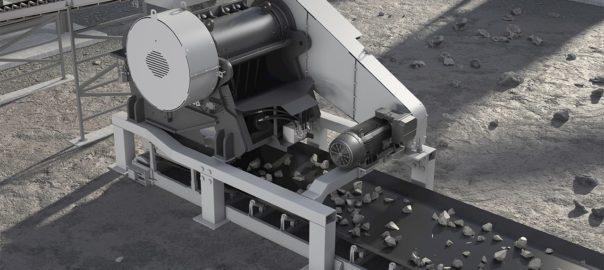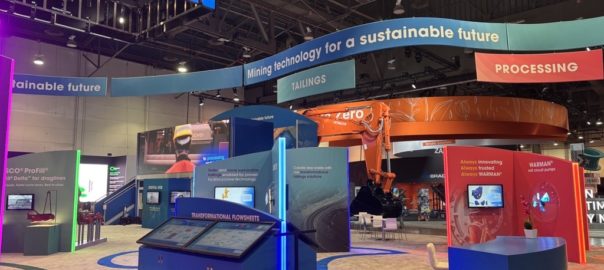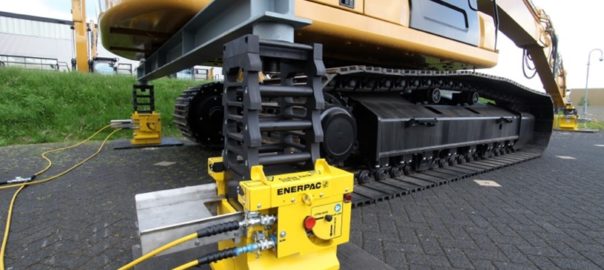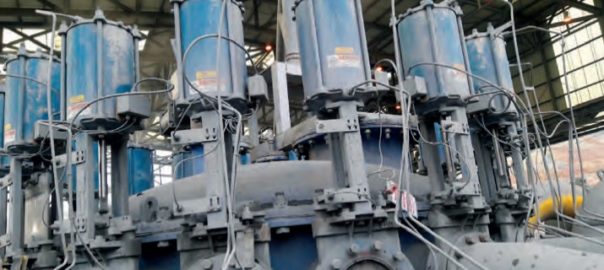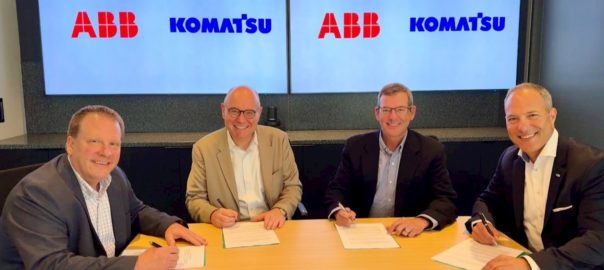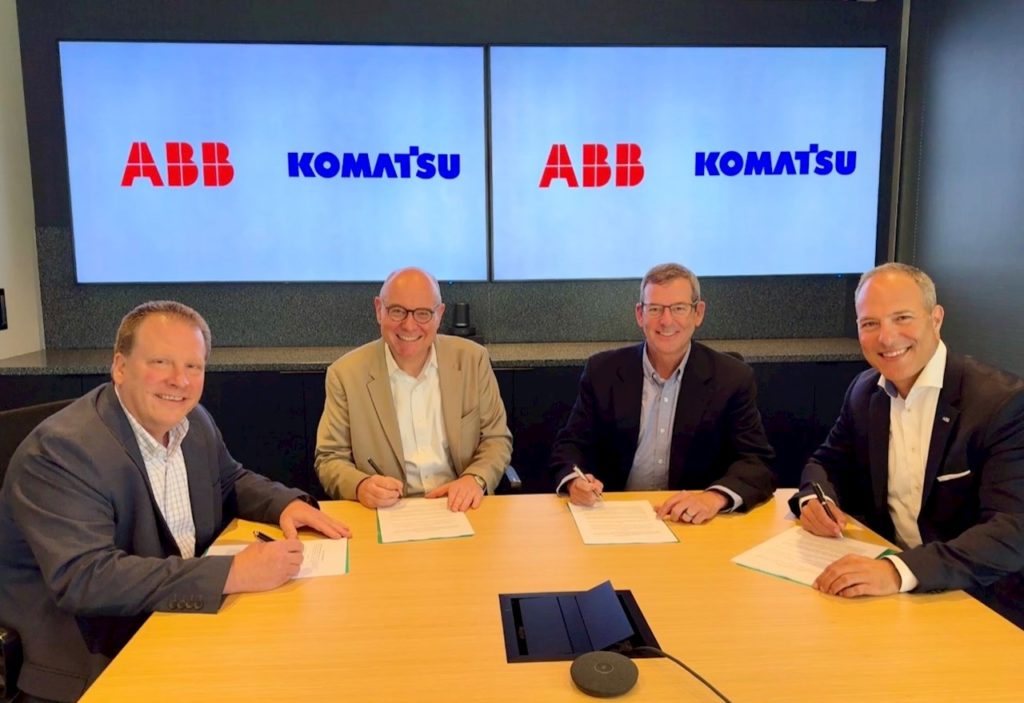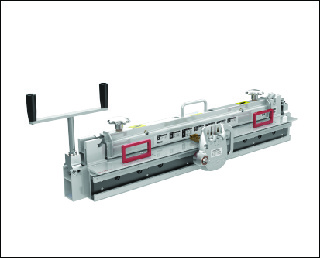ABB showcased its comprehensive portfolio tailored for the mining and aggregate industries at MINExpo 2024 this week: a portfolio that includes industrial electric motors, variable speed drives, services for motors, generators, drives and e-mobility solutions designed for the mining sector.
“From cellphones to electric vehicles, batteries and wind farms, virtually every aspect of modern life relies on materials mined from the earth, but there must be a transformation,” Peter Basile, ABB’s Traction Division US President, said. “The demand for mined products will continue to increase, so the need for sustainable, safe and productive mining has never been greater. ABB helps operators meet their goals of improved reliability, reduced energy costs and increased automation.”
ABB’s technologies reduce operating costs, enhance energy efficiency and cut carbon emissions by electrifying mining vehicle drivetrains and integrating digital systems, the company says. Supported by a global network of experts, these innovations accelerate decarbonisation and promote sustainable operations. ABB’s robust traction, motor and drive solutions are engineered to withstand the harsh conditions of mines and cement facilities, addressing challenges like dust, vibration, moisture and temperature fluctuations. ABB products meet or exceed standards for efficiency and performance across various applications, including conveyors, pumps, fans, drill rigs, crushers and mills.
ABB Motion’s product and service solutions in the mining and aggregate industries include:
- ABB NEMA Motors Crush+, which was launched during MINExpo, exceeds demands for reliability and safety in the harshest environments, raising the standard for motors used for crushers and other severe-duty applications. Its rugged and reliable design optimises performance, efficiency and total cost of ownership;
- The new ABB Traction Battery Pro series is designed for transportation applications with demanding requirements. Features include high power and safety, less space requirements and rapid charging capabilities;
- AMXE132S traction motor combines ABB’s design expertise, experience and manufacturing footprint to offer a configurable motor that can fulfill diverse propulsion and auxiliary needs and challenges;
- Baldor-Reliance SP4 severe-duty motor meets the NEMA Super Premium® efficiency level in a standard AC induction motor design operating across the line, independently of a variable speed drive. SP4 motors are highly efficient, running cooler, reducing heat-based energy losses and extending bearing and other component life;
- SynRM (synchronous reluctance) motor delivers reliable operation with robust designs and efficiencies up to IE6. ABB’s SynRM is the first motor to reach these presumptive levels without the use of magnets. SynRM technology is suitable for safe and hazardous areas and can be packaged in a variety of frames including imperial dimensioned and water-cooled designs;
- RXT MTO (modified-to-order) totally enclosed fan-cooled (TEFC) motor, part of the RXT series of Reliance® legacy motors, is tailored to customer specifications. Designed to meet the rigorous demands of the North American market, RXT meets or exceeds NEMA Premium efficiency energy standards, delivering exceptional performance and efficiency;
- ABB’s medium voltage variable drive solutions for mining customers are designed to provide reliability and flexibility in meeting mining application needs; and
- ABB Motion Services helps customers maximize uptime, extend product life cycle and enhance the performance and energy efficiency of motors, generators and drives. ABB Motion OneCare and Partnered Solutions provide data, analytics, recovery, modernisation and performance improvement services, enabling innovation and success through digitalization by securely connecting and monitoring customers’ motors and drives.







